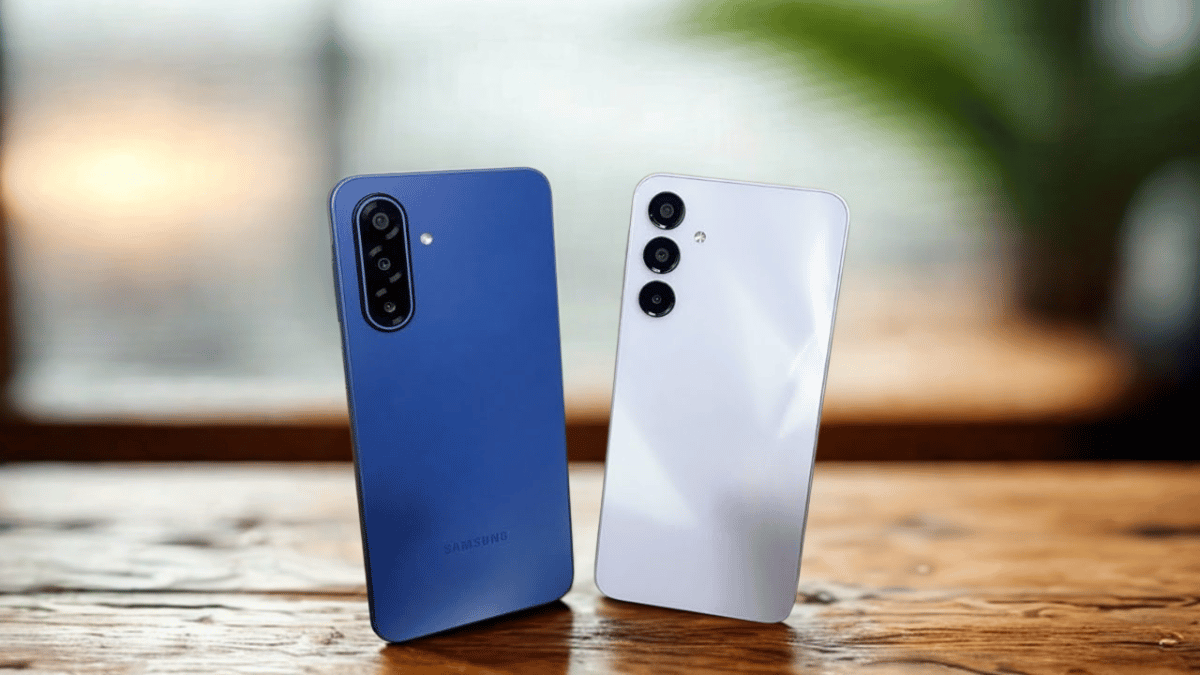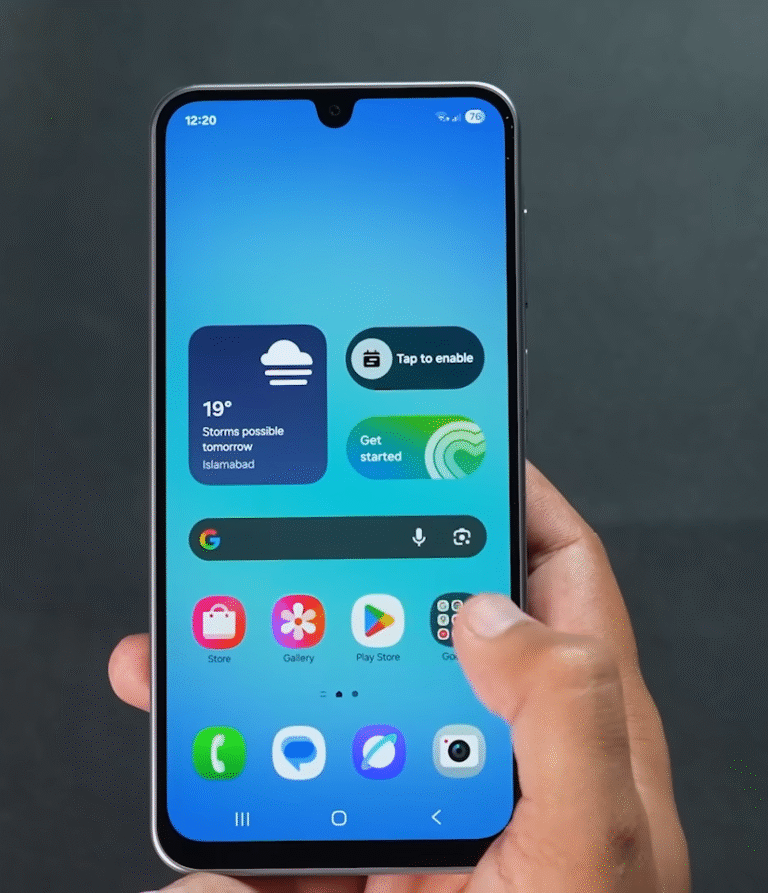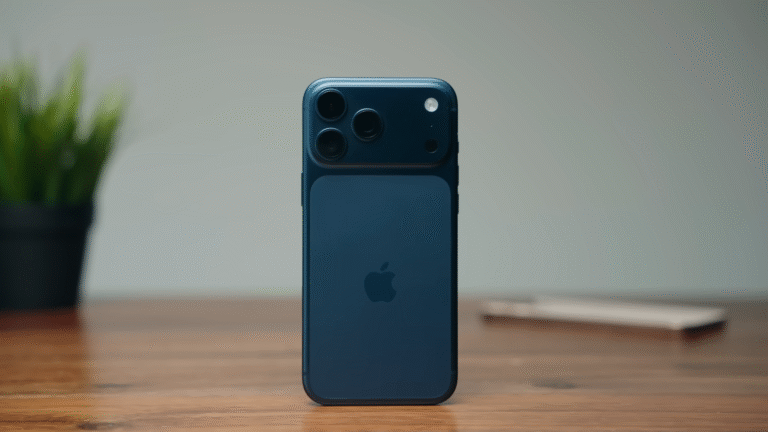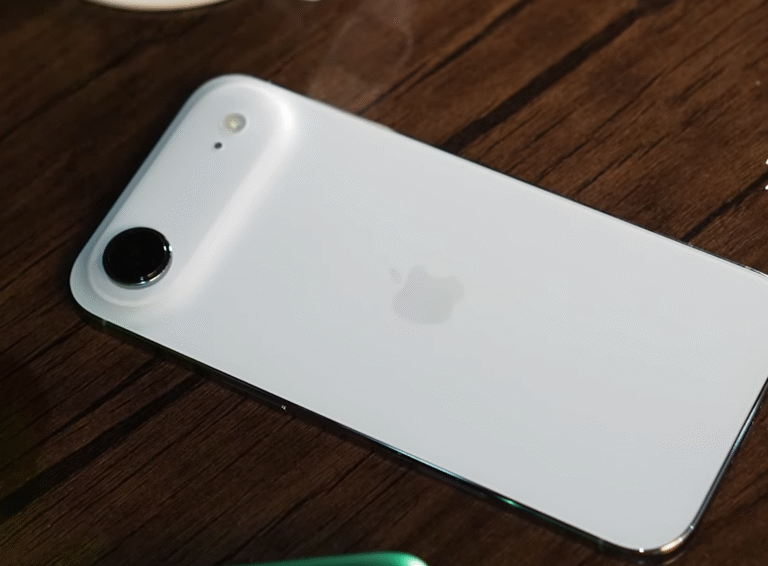
When Samsung announced the Galaxy A17 5G in August 2025, it raised eyebrows. After all, the Galaxy A16 5G had only been around since October 2024 — not even a full year. So why the sudden refresh? Was it necessary? And more importantly, is the A17 really an upgrade worth considering over the A16?
On paper, the two phones look almost identical. Same display size, same battery, even the same processor. But if you’ve actually held and tested them side by side, there are small yet meaningful differences that could change your experience. That’s what I want to dig into here — not just specs, but the details you won’t see on Samsung’s spec sheet.
Design: Matte vs Glossy Reality
The first thing you notice is the finish. The A16 shipped with a glossy back that looked flashy in product photos and even had a wavy pattern that shimmered under light. It looked premium… until you touched it. Fingerprints clung to that surface like glue, and within minutes it looked messy.
The A17 switches to a matte finish. On paper, that sounds like a small tweak, but in real life, it changes how you use the phone. It hides smudges much better, feels less slippery, and even has a subtle frosted “wave” effect depending on the angle of light. I’ve always preferred matte over glossy, and Samsung clearly heard the feedback here.
Does it completely solve the fingerprint problem? No — you’ll still see some smudges if you look closely. But compared to the A16, it’s a noticeable quality-of-life improvement.
Camera Modules: Cosmetic or Practical?
Both phones carry three cameras: 50MP main, 5MP ultra-wide, and 2MP macro. But visually, Samsung redesigned the camera housing. The A16 had three separate rings, while the A17 combines them into a single pod.
Does this make any difference in actual photography? Honestly, no. But it does subtly change the vibe of the phone. The A17 looks cleaner, less busy on the back. For users who care about aesthetics (and let’s be real, most buyers do), this kind of polish matters.
Gorilla Glass Victus: Small Detail, Big Confidence
The A16’s screen protection was never clearly specified. The A17, however, steps up with Corning Gorilla Glass Victus — a name that signals durability. If you’ve ever dropped a phone and watched the display crack, you know why this matters.
Does it mean you can skip a screen protector? No. But it does give you extra confidence compared to the “mystery glass” on the A16. It’s one of those behind-the-scenes upgrades that doesn’t change how the phone feels day-to-day, but reduces long-term anxiety.
OIS: The Underrated Upgrade
Here’s where the A17 quietly pulls ahead: optical image stabilization (OIS) on the main camera.
If you shoot video, OIS immediately makes footage smoother. No more jittery clips when you’re walking. And for photos, especially at night, OIS reduces blur caused by shaky hands.
The A16’s cameras were already solid for a budget phone, but adding OIS moves the A17 closer to mid-range quality. For casual shooters, this is probably the most meaningful upgrade.
The Strange Case of No 4K
Here’s the head-scratcher: both phones max out video recording at 1080p. In 2025, that feels outdated. Even budget rivals offer at least 4K30.
For many people, this won’t be a deal-breaker — social media apps compress videos anyway. But if you care about future-proofing your memories, this limitation feels disappointing. And it’s doubly strange when you remember Samsung included OIS. Why stabilize footage that can’t even go beyond 1080p?
Benchmarks Don’t Tell the Whole Story
Both phones run on the Exynos 1330. Logically, you’d expect the A17 to perform slightly better, especially with up to 8GB of RAM. But in Geekbench 6 tests, the results were the opposite: the A16 actually scored higher.
That’s… odd. Same chip, same software (One UI 7 on Android 15), more RAM on the A17 — yet lower scores.
This likely comes down to optimization. New devices sometimes need a few firmware updates before performance stabilizes. In everyday use, both phones feel equally smooth for scrolling, multitasking, and casual gaming. But it’s a reminder: benchmarks aren’t gospel. If you only looked at the numbers, you’d think the older A16 was faster — which in real life, isn’t true.
Battery & Charging: No Change, But No Complaints
Both phones carry a 5000 mAh battery with 25W fast charging. In practice, this means a full day of mixed use with juice left for the evening. Samsung didn’t push things forward here, but honestly, they didn’t need to. The formula works.
Wireless charging is still absent, which isn’t surprising at this price. If that’s a must-have, you’ll need to look higher up Samsung’s lineup.
Where Did the Headphone Jack Go?
Budget phones often keep the headphone jack alive. Not here. Both the A16 and A17 drop it entirely. If you’re still clinging to wired headphones, you’ll need a USB-C adapter.
For many people, this won’t matter in 2025. Bluetooth earbuds are cheap and everywhere. But I know some users feel this is Samsung cutting a corner where they didn’t need to.
Final Thoughts: Is the A17 Worth It?
If you already own the A16 5G, upgrading to the A17 might feel unnecessary — unless you really care about OIS or the matte finish. Performance is nearly identical, and Samsung didn’t add headline-grabbing features like 4K video or faster charging.
But if you’re buying fresh, the A17 edges out the A16 in the details that matter:
-
A cleaner matte design that hides smudges
-
Gorilla Glass Victus for peace of mind
-
OIS for better photos and videos
Sometimes, small refinements make the difference between a phone that feels “good enough” and one that feels reliable every single day. The Galaxy A17 isn’t a revolution, but it’s a smart, subtle evolution.
FAQs
Q1: What are the main differences between Samsung Galaxy A17 5G and A16 5G?
The A17 brings a matte finish, Gorilla Glass Victus, and OIS on the main camera, while most other specs remain unchanged.
Q2: Does the Galaxy A17 5G support 4K video?
No, both the A16 and A17 are limited to 1080p recording, even though the A17 has OIS for stabilization.
Q3: Which phone feels better in hand, A16 or A17?
The A17’s matte back feels less slippery and hides fingerprints better compared to the glossy A16.
Q4: Is there any performance difference between A16 and A17?
Both use the Exynos 1330. Benchmarks oddly show the A16 slightly higher, but in real use they feel equally smooth.
Q5: Does the A17 5G have better durability than the A16?
Yes, thanks to Gorilla Glass Victus on the front, giving it stronger protection against drops and scratches.
Q6: Is the A17’s camera better than the A16’s?
Both use the same 50MP main shooter, but the A17 adds OIS, which helps reduce blur in photos and shaky video.
Q7: Do either phones support wireless charging?
No, both the A16 and A17 support only wired 25W fast charging.
Q8: Do these phones still include a headphone jack?
No, both models have dropped the headphone jack. You’ll need Bluetooth or a USB-C adapter.
Q9: Should I upgrade from A16 to A17?
Not unless you really want OIS and a matte design. For new buyers, the A17 is the better choice, but the A16 is still solid.
Q10: How is the battery life on the A17 5G?
Excellent — the 5000mAh battery comfortably lasts a full day of normal use, just like the A16.



